Biology > QUESTIONS & ANSWERS > Rasmussen College BIO BACTERIA Week 3 CH 4 & 9 (1) . (All)
Rasmussen College BIO BACTERIA Week 3 CH 4 & 9 (1) .
Document Content and Description Below
OpenStax Microbiology Chapter 4: Prokaryotic Diversity OpenStax Microbiology Chapter 4: Prokaryotic Diversity Multiple Choice 1. The term prokaryotes refers to which of the following? A. very sm... all organisms B. unicellular organisms that have no nucleus C. multicellular organisms D. cells that resemble animal cells more than plant cells Answer B 2. The term microbiota refers to which of the following? A. all microorganisms of the same species B. all of the microorganisms involved in a symbiotic relationship C. all microorganisms in a certain region of the human body D. all microorganisms in a certain geographic region Answer C 3. Which of the following refers to the type of interaction between two prokaryotic populations in which one population benefits and the other is not affected? A. mutualism B. commensalism C. parasitism D. neutralism Answer B 4. Which of the following describes Proteobacteria in domain Bacteria? A. phylum B. class C. species D. genus Answer A 5. All Alphaproteobacteria are which of the following? A. oligotrophs B. intracellular C. pathogenic D. all of the above E. none of the above Answer A 6. Class Betaproteobacteria includes all but which of the following genera? A. Neisseria. B. Bordetella. C. Leptothrix. D. Campylobacter. Answer Page 1 of 18 OpenStax Microbiology Chapter 4: Prokaryotic Diversity D 7. Haemophilus influenzae is a common cause of which of the following? A. influenza B. dysentery C. upper respiratory tract infections D. hemophilia Answer C 8. Which of the following is the organelle that spirochetes use to propel themselves? A. plasma membrane B. axial filament C. pilum D. fimbria Answer B 9. Which of the following bacteria are the most prevalent in the human gut? A. cyanobacteria B. staphylococci C. Borrelia D. Bacteroides Answer D 10. Which of the following refers to photosynthesis performed by bacteria with the use of water as the donor of electrons? A. oxygenic B. anoxygenic C. heterotrophic D. phototrophic Answer A 11. Which of the following bacterial species is classified as high G+C gram-positive? A. Corynebacterium diphtheriae B. Staphylococcus aureus C. Bacillus anthracis D. Streptococcus pneumonia Answer A 12. The term “deeply branching” refers to which of the following? A the cellular shape of deeply branching bacteria B the position in the evolutionary tree of deeply branching bacteria C the ability of deeply branching bacteria to live in deep ocean waters D the pattern of growth in culture of deeply branching bacteria Answer B [Show More]
Last updated: 1 year ago
Preview 1 out of 18 pages
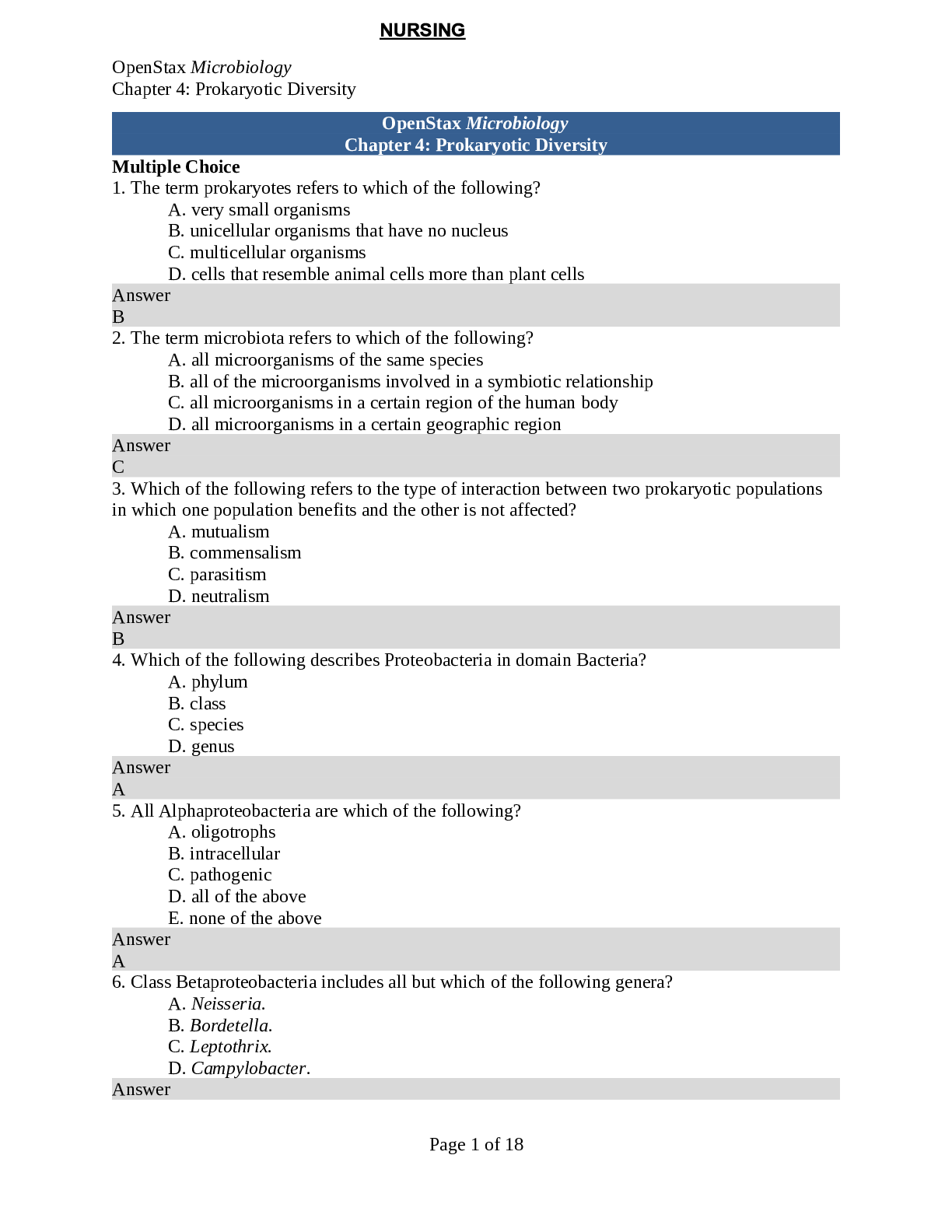
Reviews( 0 )
Document information
Connected school, study & course
About the document
Uploaded On
May 13, 2022
Number of pages
18
Written in
Additional information
This document has been written for:
Uploaded
May 13, 2022
Downloads
0
Views
42

.png)
.png)
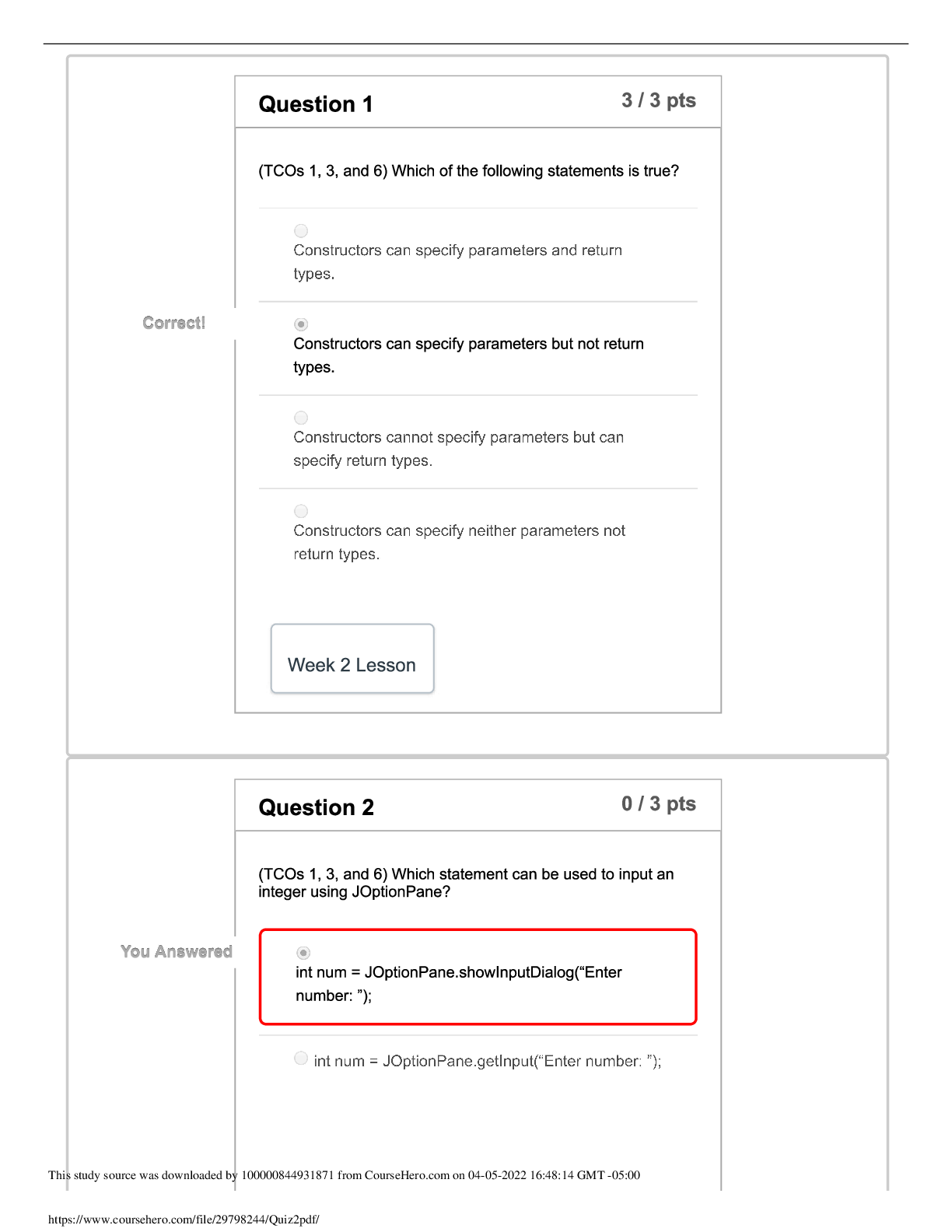
.png)
.png)
.png)
.png)
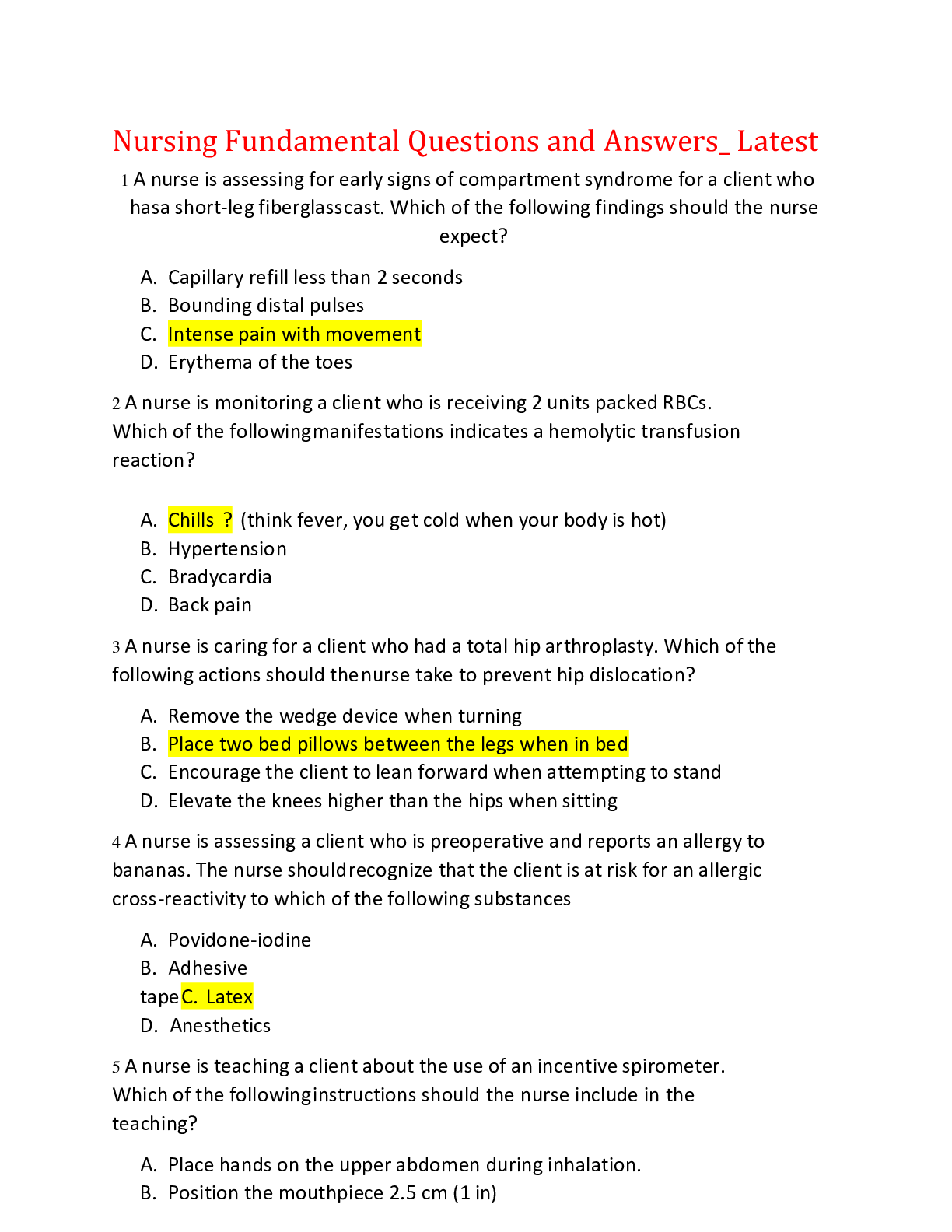
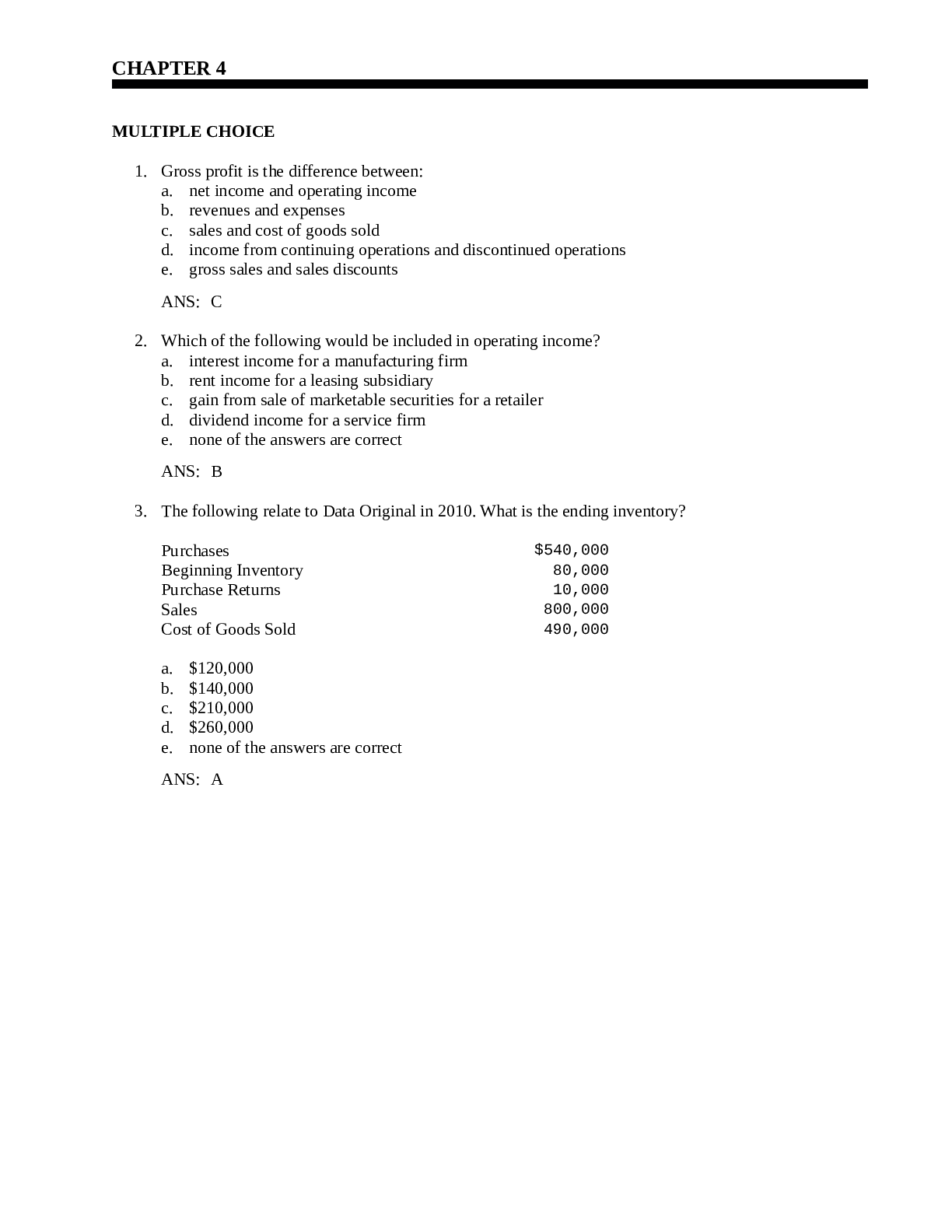


.png)

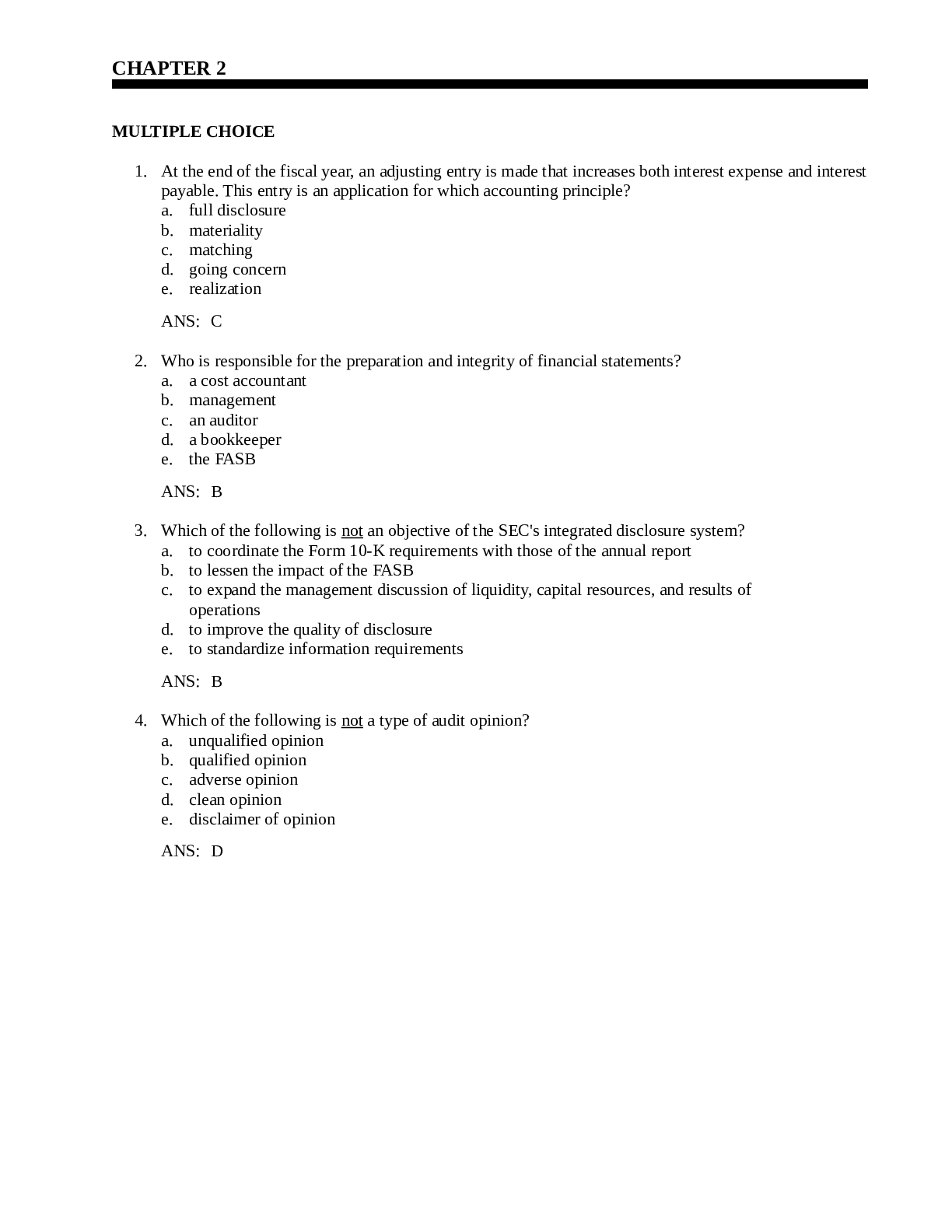




.png)

.png)




.png)
.png)

.png)




.png)
.png)

